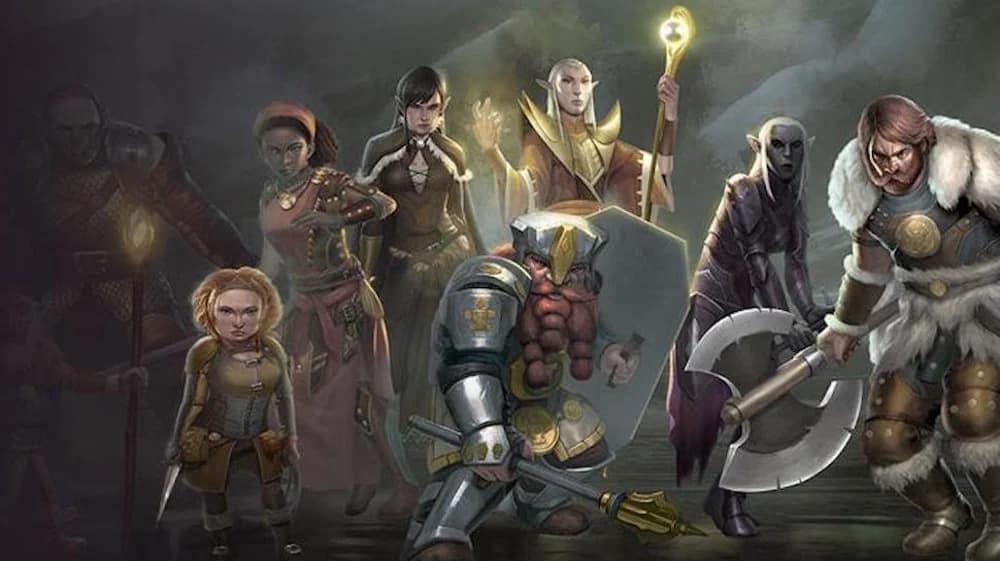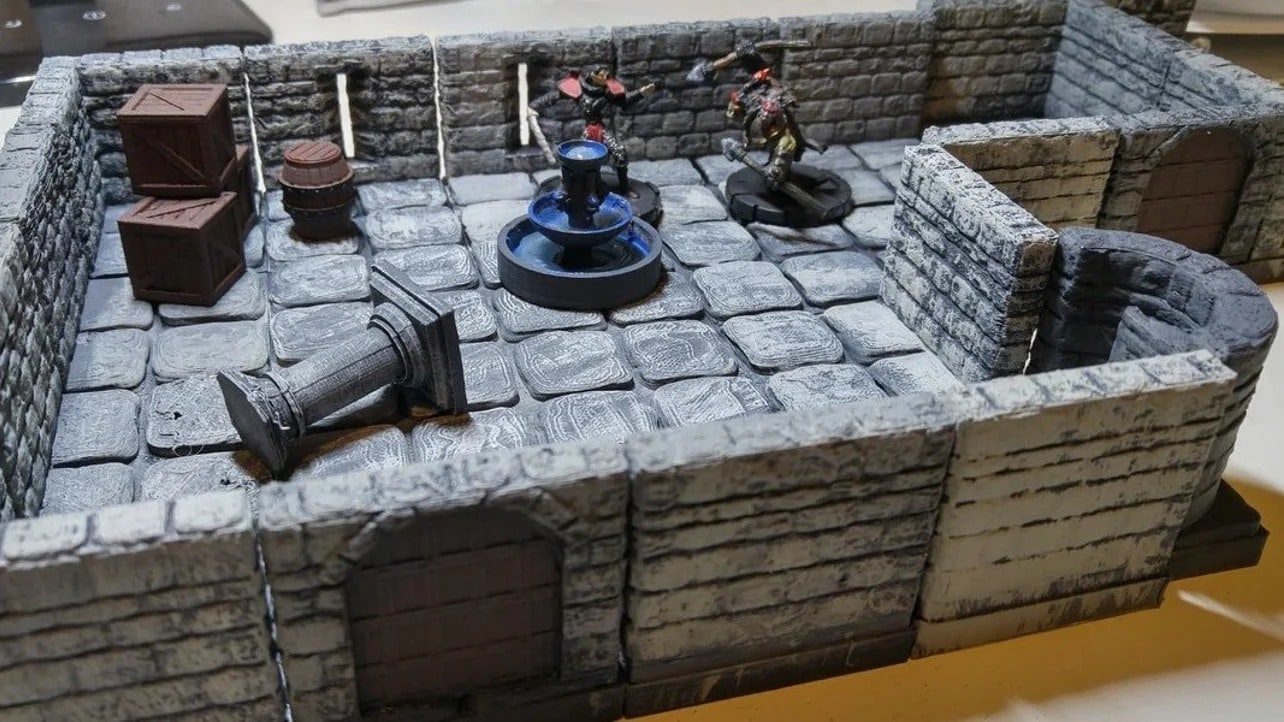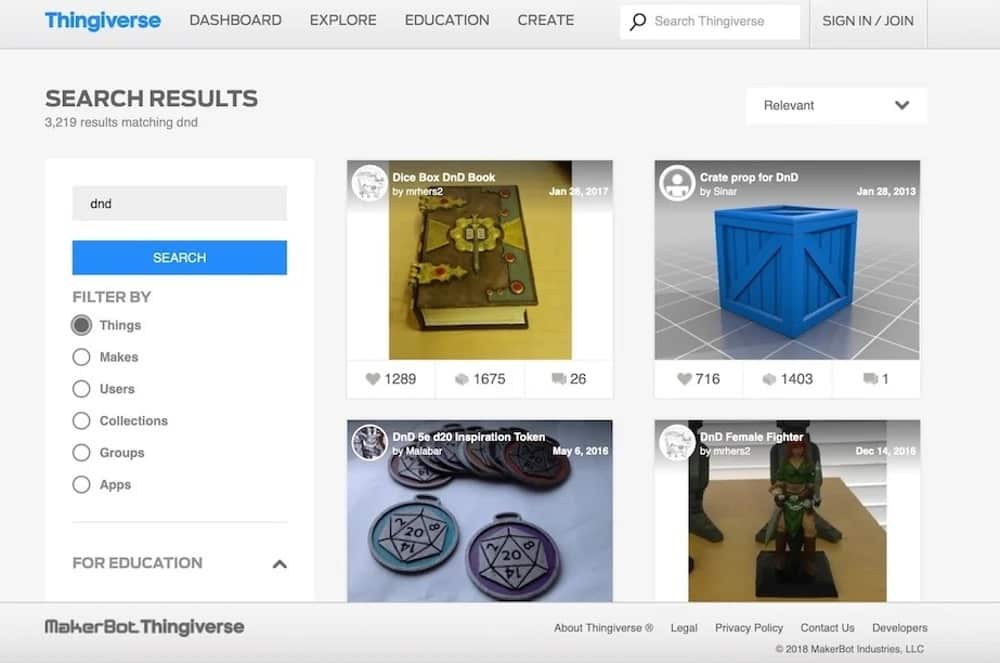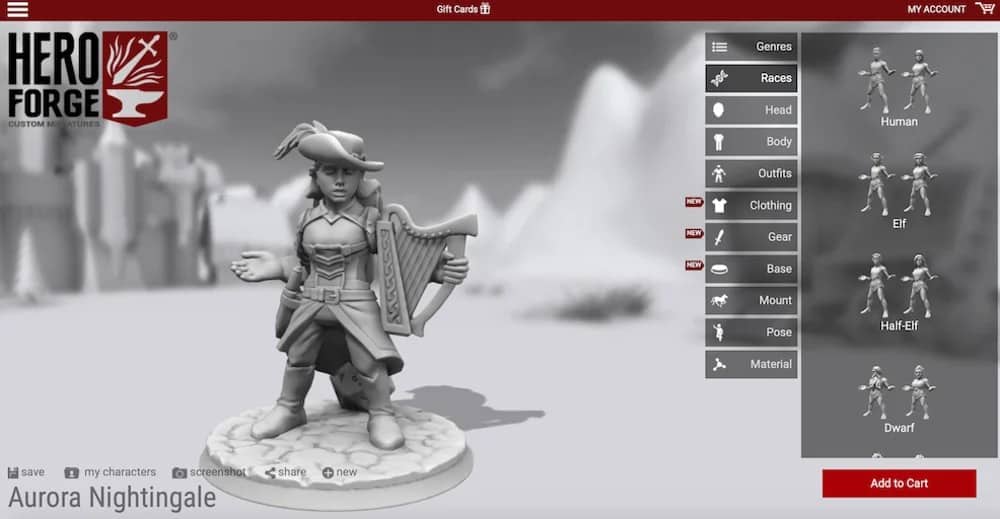Dungeons & Dragons, also known as D&D (or DND), is a fantasy tabletop role-playing game (RPG) derived from miniature tabletop wargames. The original D&D, published in 1974, was designed by Gary Gygax and Dave Arneson. It serves as the foundation for later versions as well as many other role-playing games.
In this article, we provide some insights into D&D pieces that you can make on your own. We also showcase a few items that have been made with 3D printing as well as briefly compare some finished pieces created in different materials.
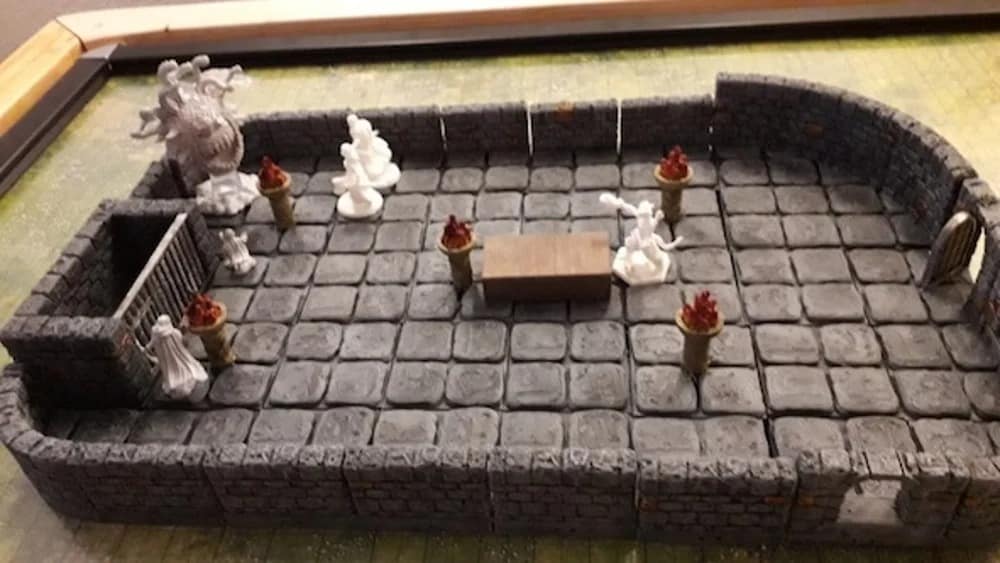
Types of Pieces
For those who are new to D&D, there are many components that are essential to the game. For instance, as you explore new areas and fight different battles, elements like landscaping, props, traps and monsters will become very important.
On that note, here are some of the items you can create with 3D printing:
- Miniatures: These could be your heroes, monsters, key non-player characters, or animals.
- Landscaping and props: Little things like water wells, stalagmites, dungeon tiles, wood crates, barrels, campfires, and almost anything else you can think of. Is your dungeon is set on a giant ship? Why not 3D print it (or part of it)?
- Traps: What’s more evil than monsters? How about a statue that fires a beam of energy at anything nearby until the heroes have solved the puzzle? It’s called the Statue of Thoughts by the way, and it could take any shape or form, so use your imagination!
- Dice: D&D uses polyhedral dice to determine in-game events. Each die is abbreviated by a ‘d’, follow by the number of sides. A set of D&D dice consist of d4, d6, d8, d10, d12 and d20. A pair of d10 (2d10) can be used together as percentile dice, or d100.
- Dice towers: Each tower is designed with various hidden platforms to prevent cheating. When dice are dropped into the top, they bounce off and around the interior platforms before appearing at the bottom.
- Other D&D accessories: Items like DM screens, dice boxes, and dice trays are all the fancy stuff you could add to your game, just to show off your nerdiness.
Digital File Sources
D&D files are widely accessible through several online platforms thanks to the game’s incredibly large fan base. Here are some of the most popular platforms with D&D digital files:
- Thingiverse: One of the best-known platforms for 3D models, Thingiverse also has thousands of designs just waiting to be added to your D&D collection.
- Heroforge.com: This platform specializes in customizing your own characters. Different genres, including fantasy, western, sci-fi, modern and east-Asian, are available on the platform, and new character design elements are constantly being added.
- Microsoft 3Dbuilder: Built into Windows 10, this app is for 3D modeling and printing. It allows you to print and modify any existing designs that are available in the integrated model library, so you can customize your miniatures as you see fit.
- TinkerCAD: Another popular 3D modeling website-based program with a sizable community. Similar to Thingiverse, there are thousands of designs to choose from.
- Desktophero3D.com: Similar to Heroforge.com, Desktop Hero 3D specializes in character modeling. The procedure is the same, but the element selections are different. Try out both websites to see which designs suit you better.
Example Prints
Character Figurine
We chose heroforge.com to customize our hero miniature. Selecting the various elements is a simple point-and-click process. Just make sure you create an account, log in, and save your design prior to checkout, otherwise, the updated elements will not be added to your character. The digital model will be available for download once the checkout procedure is completed.
With an FDM printer, the model is then set at a 45-degree angle with quite a lot of support structures.
Once the supports are removed, the figurine is ready to be painted (if you want).
Dice
For the dice, we used a 3D model that we found online, which we then printed using an SLA printer.
Conclusion
All things considered, creating your own D&D pieces allows you to unleash your creativity, which can be very addictive! Nonetheless, it’s not a simple procedure, taking time and patience to create the articles that best fit your game. If you can master your design and modeling skills, you might even be able to turn it into a profitable business. Otherwise, simply enjoying is enough!
If you don’t have access to a printer, or if you really want to ensure that your pieces are high quality, consider hiring a 3D printing service. Get a quote from FacFox:)

